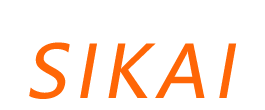Belt conveyor speed adaptation problem
At present, one viewpoint is advantageous when the belt conveyor is operated with a belt speed adjustable state. This paper will quote the problems in the speed adjustment of belt conveyors, which are recognized as the research results. The influence of speed control on the life of various parts of the belt conveyor, whether the material filling rate has energy saving effect, the relationship between the running speed of the conveyor and the drag coefficient The vibration of the drive unit indicates that the speed regulation is unfavorable.
1. General view of speed control of belt conveyor
Generally, the speed control of the belt conveyor is mainly for the start-up process of the conveyor, and the purpose is to reduce the dynamic load of the belt conveyor system, and the belt conveyor runs at a constant speed after the start of the belt conveyor. The purpose of controlling the belt speed during normal operation of the belt conveyor is to ensure that the average material fill rate is always kept at a maximum. If the conveyor speed is constant, when the amount of material to be conveyed is reduced, the cross-sectional area of the material is reduced, and when the speed regulation mode is adopted, when the amount of material to be conveyed is reduced, the filling rate of the material is maintained by reducing the belt speed. In the past, this measure was mistaken for extending the service life of the conveyor belt joints and thus extending the service life of the entire conveyor belt. The following findings will be used to prove that this view is incorrect.
1. Influence of belt conveyor speed control on the drive system
First, the relationship between the various components of the belt conveyor and the speed of the conveyor belt is analyzed. Figure 1 is a schematic view of the main components of the belt conveyor. The belt conveyor mainly consists of two rollers (head roller and tail roller); of course, the long-distance belt conveyor needs more rollers. For reasons of space, the drive unit is not mounted on the front end of the conveyor, but is mounted in the rear of the face roller.
(1) Belt conveyor feeding/unloading
The design of the unloading system requires consideration of several factors. The first is the flow characteristics of the material. Depending on the flow characteristics, the unloader is usually designed as a chute or a bin to prevent material from adhering to the surface or pile up. At the same time, the discharge direction must be consistent with the running direction of the conveyor belt (ideally at the same speed) to prevent the material from slipping on the conveyor belt and causing wear. For some special factors, it should be considered according to the actual situation, such as material humidity, to ensure smooth discharge. Other factors to consider include: material specific gravity, material particle size, and the center of gravity distribution of the particles. These parameters determine the material trajectory (parabola) at the time of unloading: when the material is discharged from the drum, the light and fine material is denser than the heavy and coarse material. For the feeding device, it must be designed in a targeted manner.
Obviously, the factors mentioned above have a great impact on the design of the discharge point. If the speed of the belt conveyor is variable, the discharge point must be adjusted to the changing material path (parabola) to prevent material from adhering or accumulating (a challenge for design engineers).
(2) Belt conveyor roller/roller
For the same belt conveyor system, as long as the system is centered, the carrying roller face and the roller are rarely worn. Therefore, the factor that actually limits the life of the carrying roller is the bearing.
The service life of a bearing is highly dependent on the load (in inverse proportion), not the speed. Therefore, if the average filling rate on the conveyor belt is always high due to the control of the speed, the service life of the bearing is lowered.
(3) Belt conveyor materials
The revised German standard DIN 22101 also takes into account the fatigue strength of conveyor belt joints. The fatigue resistance indicates the service life of the conveyor joint (depending on the change cycle of the belt tension and load). The duty cycle refers to the cyclic change cycle of the conveyor belt load from high tension to high tension. For example, when the conveyor belt rotates around the drum, the conveyor belt is subjected to direct extrusion of the drum and stretching in the outer diameter direction, that is, the conveyor belt is in a high tension state. The change in load is accounted for by the tensile length of the conveyor belt before and after unloading (ie, the difference in length between the belt being straightened and sagged).
Conveyor belt depression resistance is mainly determined by the belt tension and the material load on the conveyor belt. The greater the tension, the smaller the conveyor belt depression resistance; the greater the material load, the greater the conveyor belt depression resistance.
However, the belt tension is only affected to some extent. On the one hand, the transitional sagging of the conveyor belt is not allowed by the design specifications. On the other hand, the traction must also be as small as possible. Therefore, the only adjustable material load is the material load. With the conveyor belt constant, the roller bending resistance will decrease as the load is reduced.
(4) Belt conveyor drive
The bearings and shafts of the transmission have different natural frequencies, and short-term operation (that is, during the traditional starting process) does not cause harm, but if it is operated for a long time (when they reach the critical bending frequency), the transmission will be Causes great damage and equipment damage. This study is based on frequency analysis. The study also found that in order to avoid damage to the transmission, the belt conveyor can no longer be operated in a specific speed range. By analyzing the frequency of a 1000kW class transmission, it is possible to have a narrow speed window between 400r/min and 500r/min. There is also a speed between 650r/min and 900r/min and 1200r/min. Speed window. If the conveyor is running in these speed ranges for a long time, there may be a resonance accident.
It should also be pointed out that the affected speed range will certainly be affected by different proportions, different materials and different material strengths.
(5) Belt conveyor control
It can be seen that in the case of large changes in load and no-load, the conveyor belt speed is reduced to some extent, which may cause material overflow at the discharge point. In addition, it should be noted that speed control through the corresponding monitoring of the load amount will consume a lot of labor. Conveyor speed does not increase or decrease immediately, and it takes a while to increase or decrease. Taking into account the situation at the discharge point mentioned in the previous overview, the control system must be able to adapt to the reload during this time period.
The claim that speed control of belt conveyors can save energy has proven to be erroneous. The advantages of constant belt speed and varying loading have been verified, and the idea that control speed prevents belt wear has been denied. In summary, the problems posed by conveyor belt control measures have been proven.
Therefore, you should try to break through the bottleneck of the belt conveyor and always operate with full load material to maximize the benefits without having to find a solution that needs to reduce the speed of the conveyor belt.

Company Profile
Yi Wu Sikai Trading Company We are a factory specializing in conveyor chains, modular belts, plastic components, and conveyor systems for 27 years. Most of our products have SGS, ISO, and CE certificates. Currently, we provide services to many big and successful companies such as Vinda, Pepsi Cola, COFCO, Pacific Can, Tech-Long and others. They are all satisfied with our products and have long-term cooperation with us. We make molds for plastic table top chains, modular belts sprockets idler wheels and other plastic components. Additionally we have a professional engineering team to design and produce conveyors according to customer requirements. Our main conveyors include spiral conveyors table top chain conveyors modular belt conveyors stainless steel chain conveyors inclined conveyors gripper conveyors etc., covering different industries such as beverages foods tissues textiles tobacco fruits batteries etc.. Our company is located in Guangzhou; you are welcome to visit us anytime.
Company
Categories
- Tel:
+86-15013068448
- Skype:
- 008615013068448
- Address:
- Maotan Village, Changling Road,Huangpu District, Guangzhou
Newsletter
Subscribe To Our Mailing List
subscription
QR code




